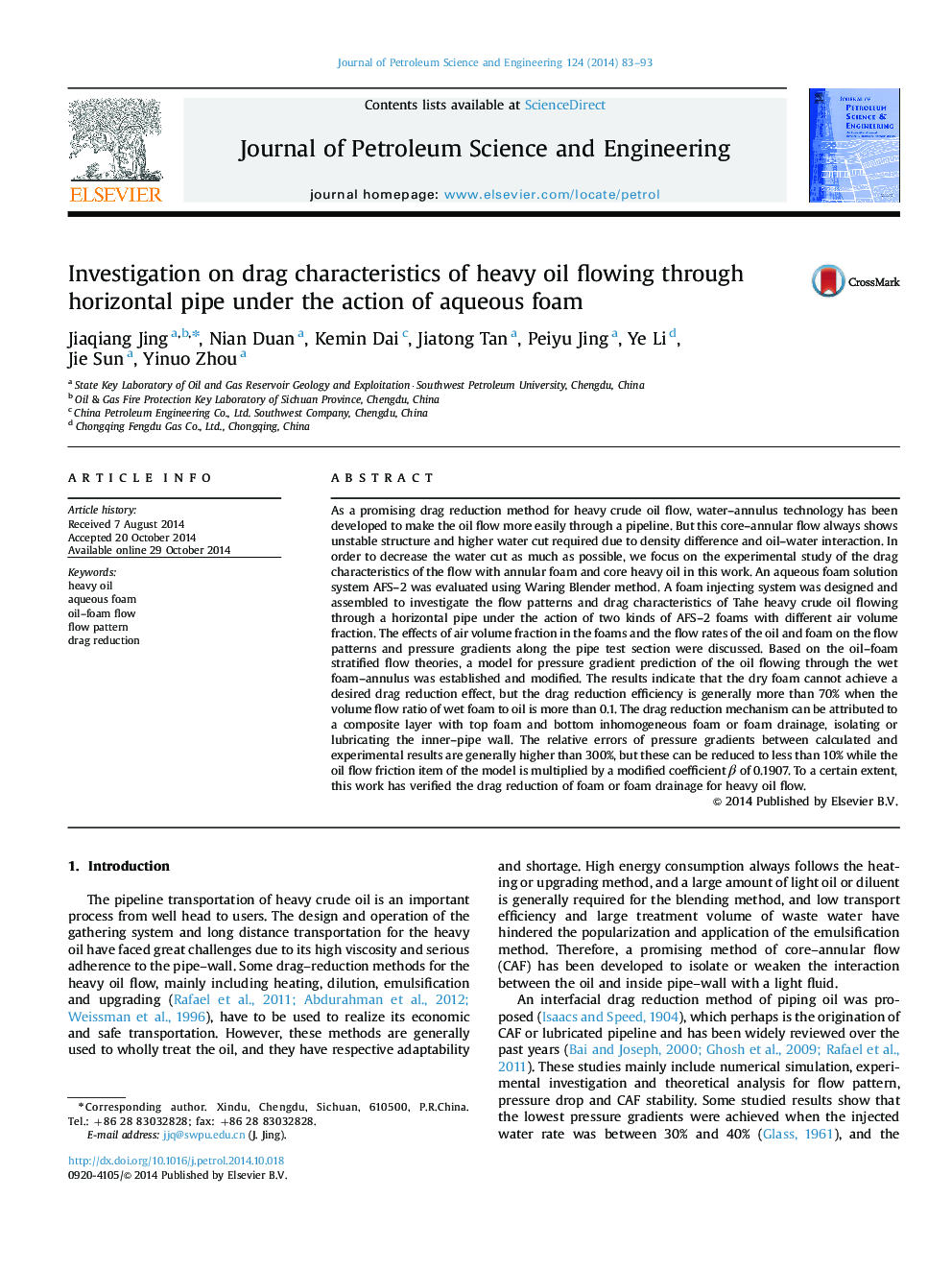| کد مقاله | کد نشریه | سال انتشار | مقاله انگلیسی | نسخه تمام متن |
|---|---|---|---|---|
| 1754931 | 1522817 | 2014 | 11 صفحه PDF | دانلود رایگان |
• This work has verified drag reduction of foam or foam drainage for foam–oil flow.
• Foam system is composed of 1 g/l SDS, 1 g/l 3#, 3 g/l PAM, 3 g/l SF–1 and 3 g/l Dod.
• Wet foam with air fraction of 50% shows obvious drag reduction for foam–oil flow.
• Considering foam-drainage action can improve pressure prediction of oil–foam flow.
• Drag reduction of oil–foam flow is due to isolation of foam-drainage layer.
As a promising drag reduction method for heavy crude oil flow, water–annulus technology has been developed to make the oil flow more easily through a pipeline. But this core–annular flow always shows unstable structure and higher water cut required due to density difference and oil–water interaction. In order to decrease the water cut as much as possible, we focus on the experimental study of the drag characteristics of the flow with annular foam and core heavy oil in this work. An aqueous foam solution system AFS–2 was evaluated using Waring Blender method. A foam injecting system was designed and assembled to investigate the flow patterns and drag characteristics of Tahe heavy crude oil flowing through a horizontal pipe under the action of two kinds of AFS–2 foams with different air volume fraction. The effects of air volume fraction in the foams and the flow rates of the oil and foam on the flow patterns and pressure gradients along the pipe test section were discussed. Based on the oil–foam stratified flow theories, a model for pressure gradient prediction of the oil flowing through the wet foam–annulus was established and modified. The results indicate that the dry foam cannot achieve a desired drag reduction effect, but the drag reduction efficiency is generally more than 70% when the volume flow ratio of wet foam to oil is more than 0.1. The drag reduction mechanism can be attributed to a composite layer with top foam and bottom inhomogeneous foam or foam drainage, isolating or lubricating the inner–pipe wall. The relative errors of pressure gradients between calculated and experimental results are generally higher than 300%, but these can be reduced to less than 10% while the oil flow friction item of the model is multiplied by a modified coefficient β of 0.1907. To a certain extent, this work has verified the drag reduction of foam or foam drainage for heavy oil flow.
Journal: Journal of Petroleum Science and Engineering - Volume 124, December 2014, Pages 83–93
